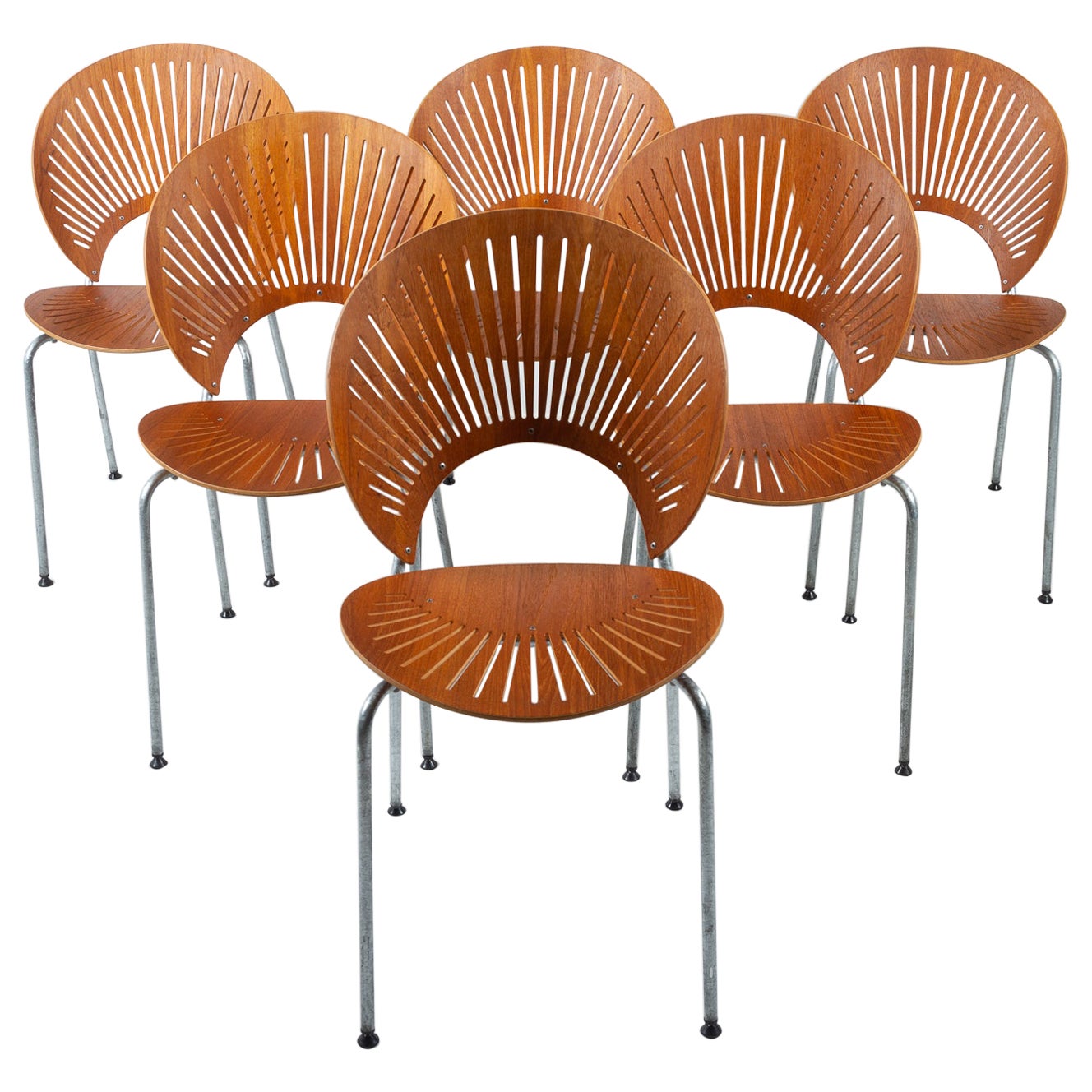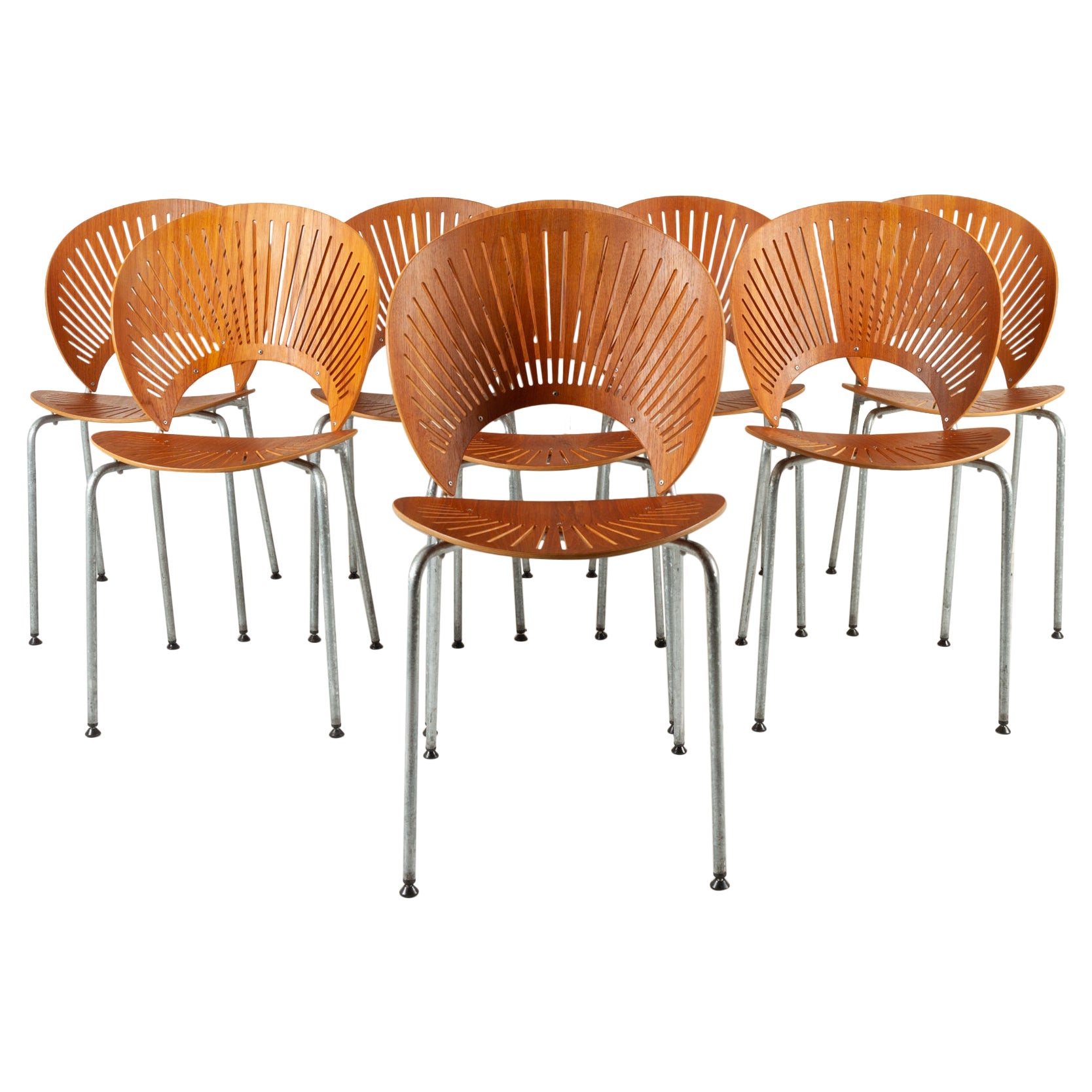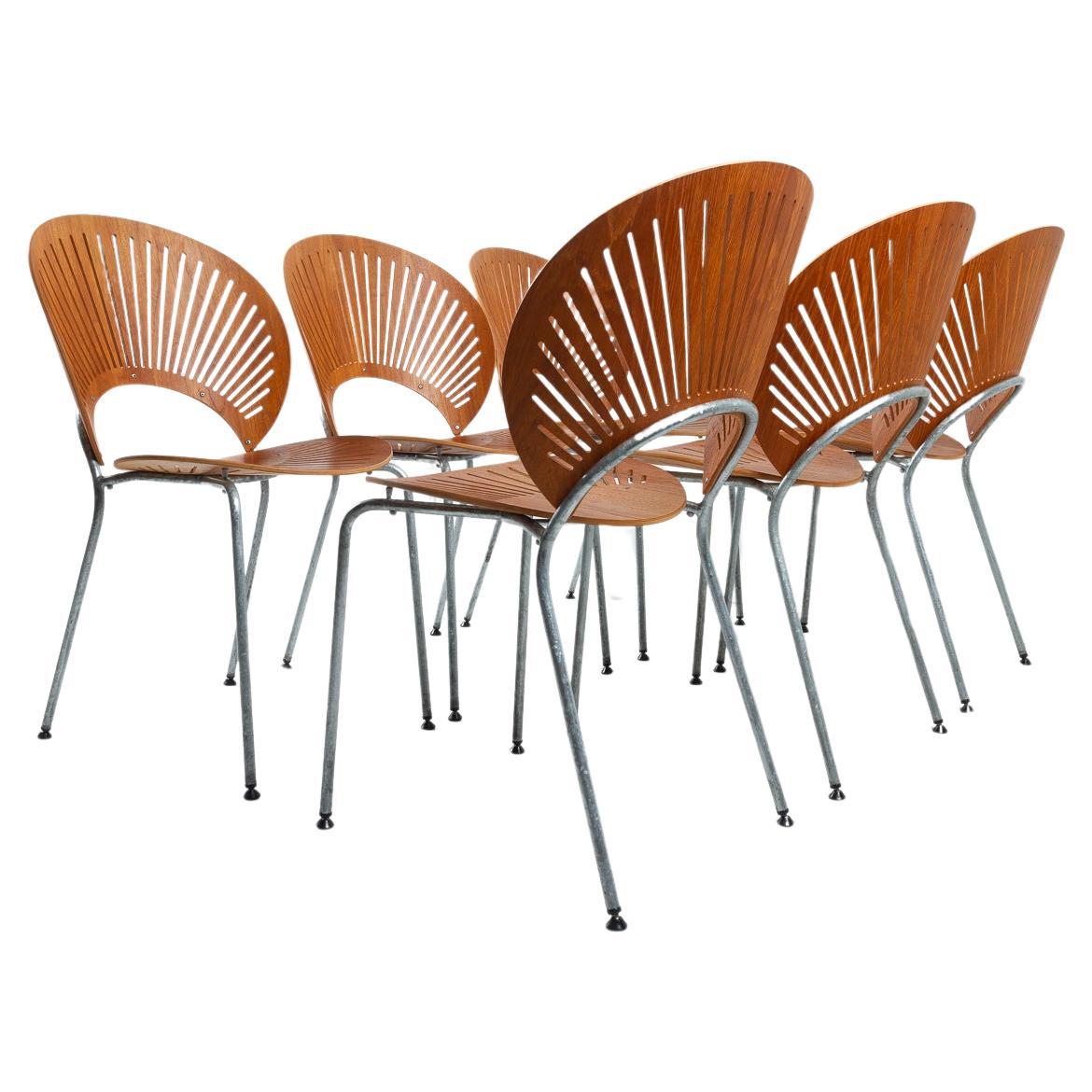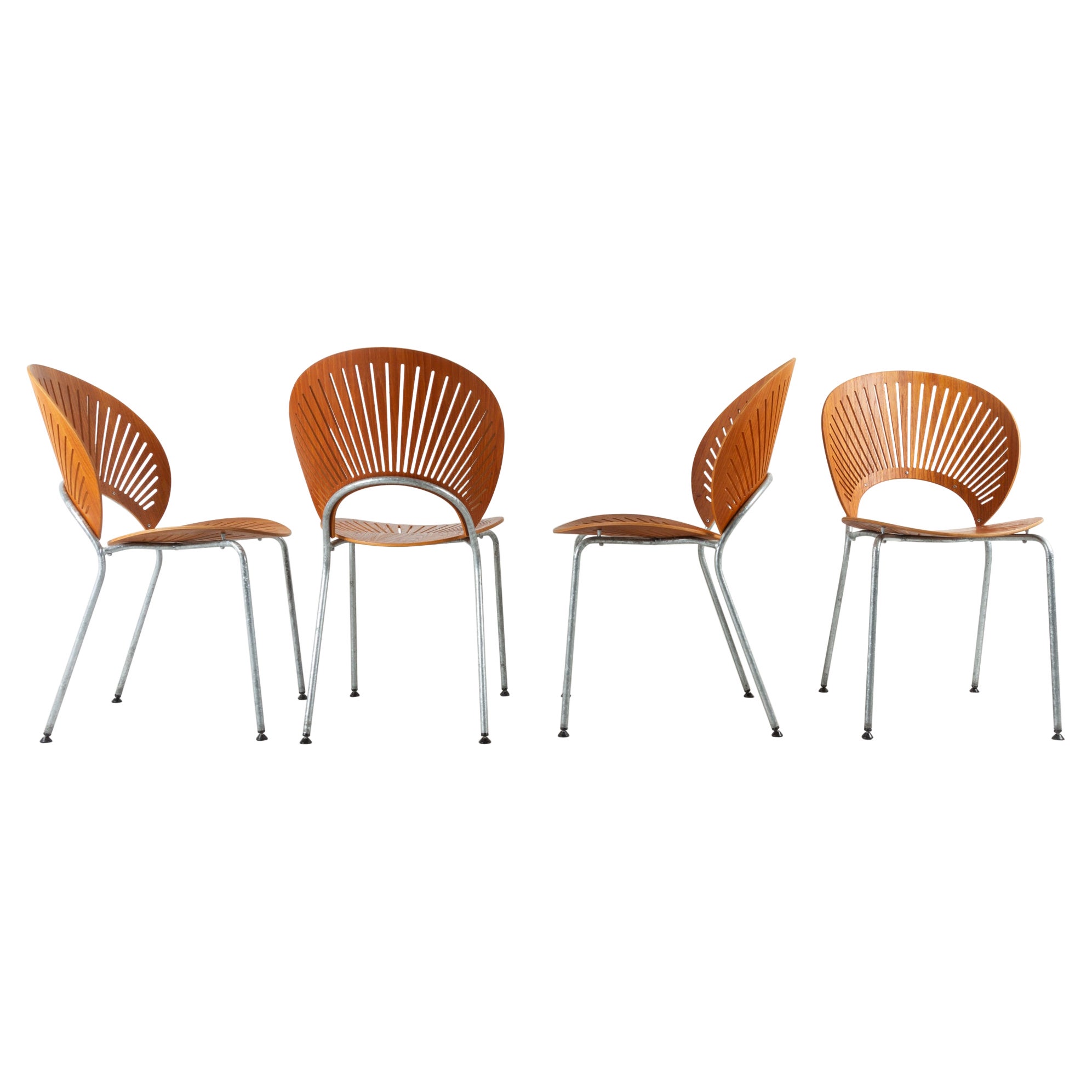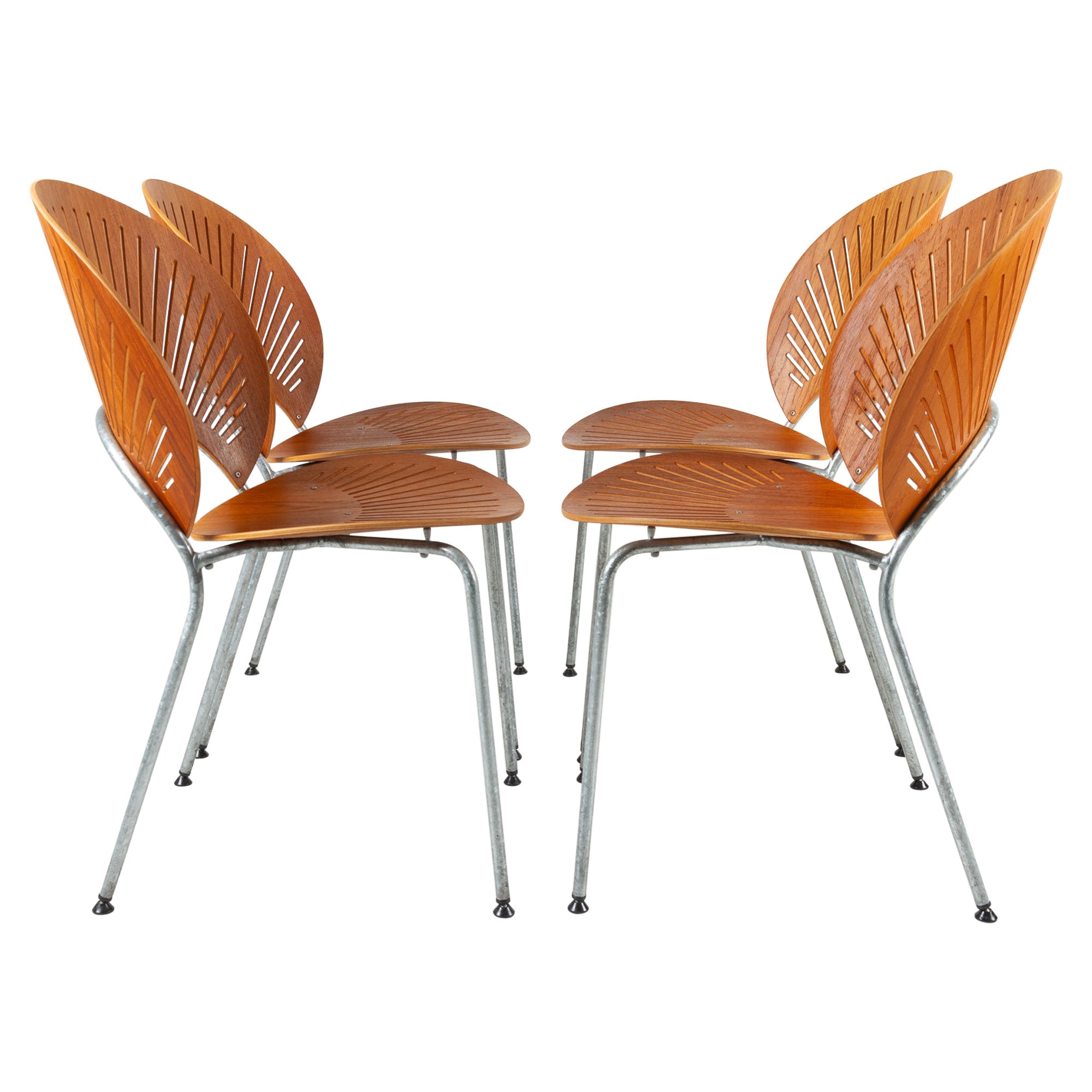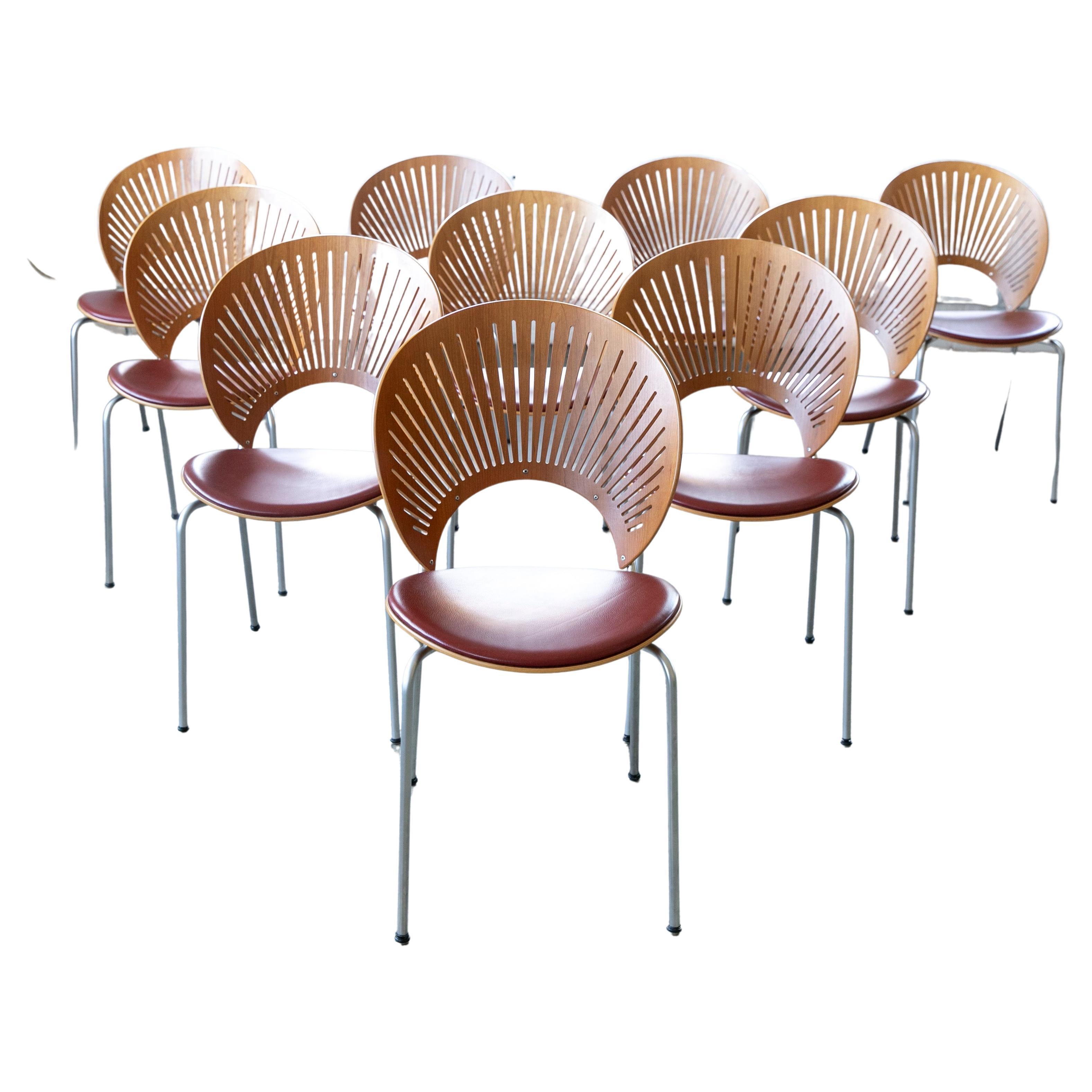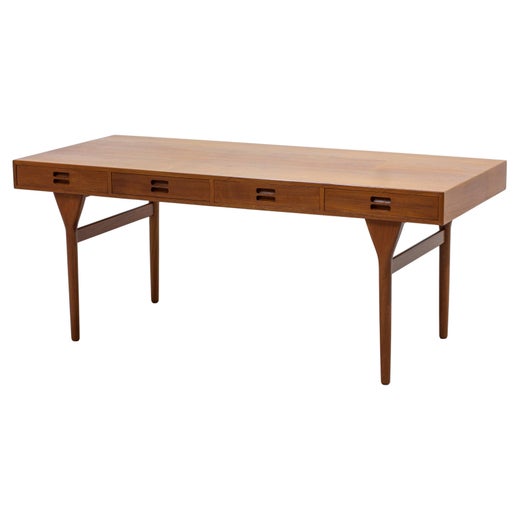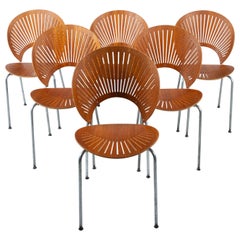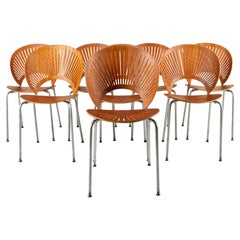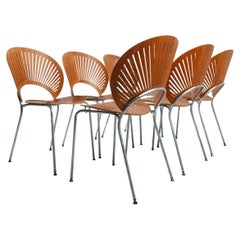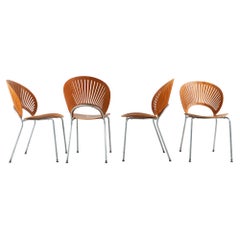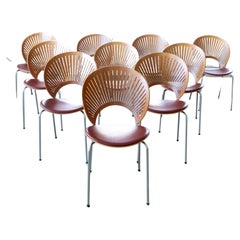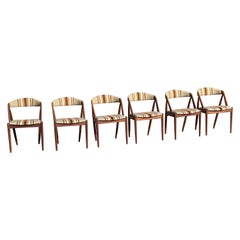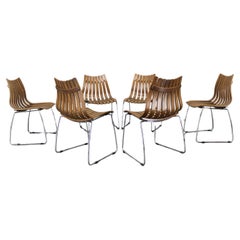Trinidad Teak Dining Chairs by Nanna Ditzel 1990s Set of 6
About the Item
- Creator:Frederecia Furniture (Manufacturer),Nanna Ditzel (Designer)
- Dimensions:Height: 33.08 in (84 cm)Width: 19.3 in (49 cm)Depth: 22.84 in (58 cm)Seat Height: 17.72 in (45 cm)
- Sold As:Set of 6
- Style:Scandinavian Modern (Of the Period)
- Materials and Techniques:
- Place of Origin:
- Period:1990-1999
- Date of Manufacture:1990-1999
- Condition:Wear consistent with age and use. Very good condition. Only few small nicks and scratches. Beautiful patina and teak color.
- Seller Location:Asaa, DK
- Reference Number:Seller: 8381stDibs: LU4897229364312
Nanna Ditzel
Nanna Ditzel was the most versatile and creative female designer that Denmark produced in the 20th century. Ditzel brought her talents to bear on a staggering array of forms — she designed furniture, jewelry, tableware and textiles; and she shaped her pieces using an equally astonishing variety of materials, from wood and wicker to silver, ceramics and fiberglass.
Born in Copenhagen, she trained as a cabinetmaker at the Royal Academy's furniture school — overseen by the great craftsman of the day, Kaare Klint — and graduated in 1943. Ditzel’s early work adhered to the classic Danish modernist tenets of simplicity, comfort and quality, and her armchairs, with their softly curved backrests are much in the spirit of Hans Wegner. Ditzel’s signature piece of that time is her Ring chair. Designed along with her husband, Jørgen Ditzel, a fabric maker, the chair has a semicircular padded armrest that seems to embrace the sitter. Ditzel began designing in wicker and in 1959 produced the Hanging chair. The piece, suspended from the ceiling by a chain, became a favorite for fashion shoots and may be as iconic of the 1960s as Eero Aarnio’s plastic Ball chair of 1963.
In 1956, Ditzel began designing for the Danish silverware firm Georg Jensen. In an association that lasted some 40 years, Ditzel would create organically shaped jewelry, barware, ceramic tableware and even tablecloths. Like her fellow Dane Verner Panton, Ditzel was not afraid to embrace industrial materials, and she began designing fiberglass chairs in the mid-1960s. Some of her most flamboyant work came toward the end of her career, in pieces such as 1989’s Bench for Two, with its shocking Op-art finish, or the Trinidad chair of 1992, with it’s sunburst-like, cut-though backs. Such feats of creativity were a fitting coda to one of the most imaginative, prolific and remarkable women of modern design.
- ShippingRetrieving quote...Shipping from: Asaa, Denmark
- Return Policy
More From This Seller
View All1990s Danish Scandinavian Modern Dining Room Chairs
Teak
1990s Danish Scandinavian Modern Dining Room Chairs
Teak
1990s Danish Scandinavian Modern Dining Room Chairs
Teak
1990s Danish Scandinavian Modern Dining Room Chairs
Teak
1990s Danish Scandinavian Modern Dining Room Chairs
Teak
Vintage 1960s Danish Scandinavian Modern Dining Room Chairs
Oak, Teak
You May Also Like
1990s Danish Mid-Century Modern Dining Room Chairs
Beech
Vintage 1950s Danish Mid-Century Modern Dining Room Chairs
Teak
Mid-20th Century Danish Mid-Century Modern Dining Room Chairs
Chrome
Vintage 1960s Danish Scandinavian Modern Dining Room Chairs
Fabric, Teak
Vintage 1960s Danish Mid-Century Modern Dining Room Chairs
Faux Leather, Teak
Mid-20th Century American Mid-Century Modern Dining Room Chairs
Upholstery, Wood, Teak
